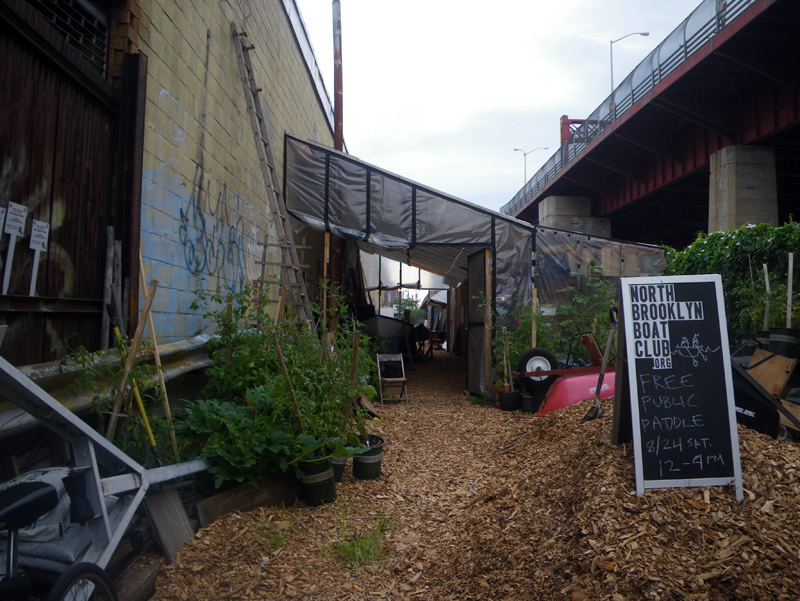
The North Brooklyn Boat Club resides in a lovingly maintained sliver of land between the Pulaski bridge and Ash Street in Greenpoint.
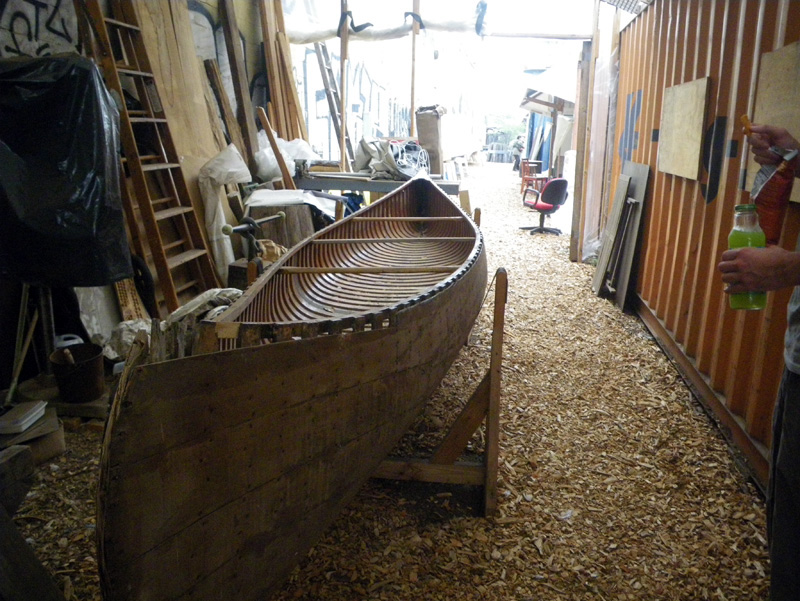
Since its establishment in 2010, the club boasts 260 members annually, and has grown to include a boatbuilding workshop, environmental education center, and new programs for the Newtown Creek.
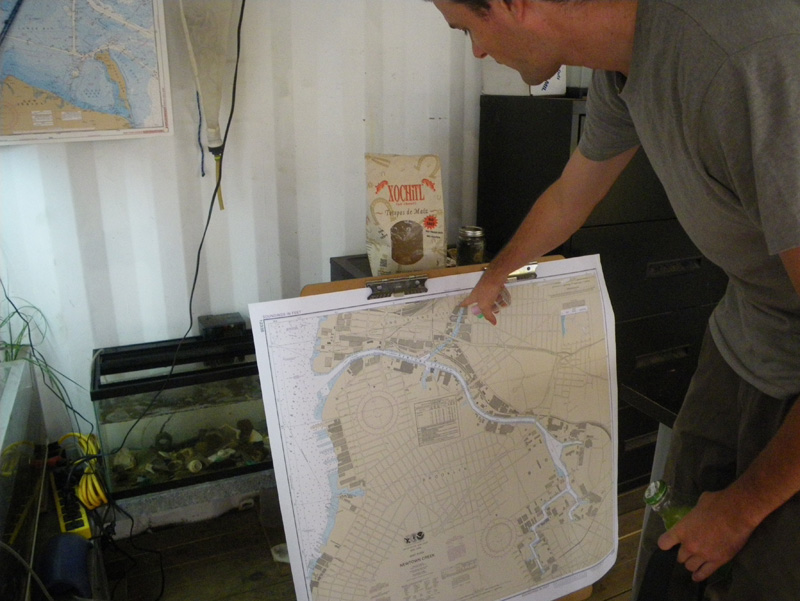
Willis Elkins, founding member and also Program Director of the Newtown Creek Alliance, invited me for a trip out in one of the NBBC canoes.
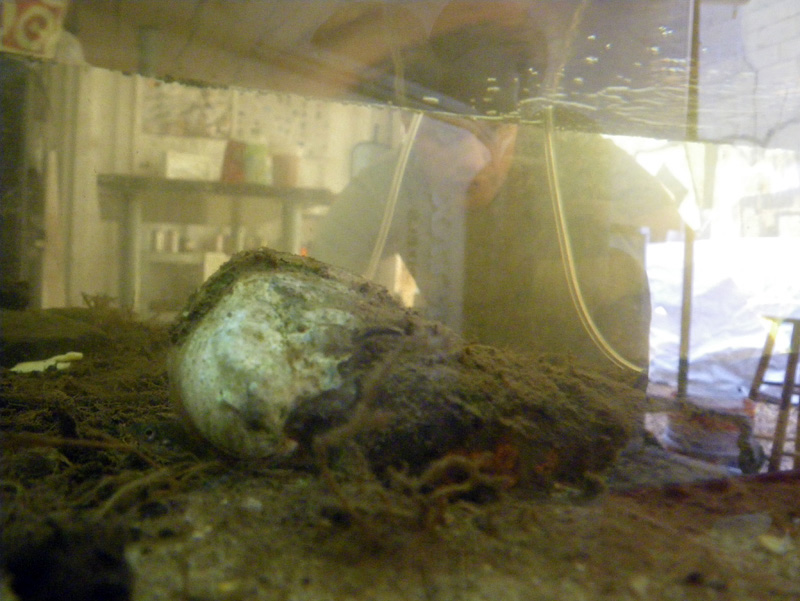
We toured the ‘Ed Shed’, complete with a digital micoroscop, library, and two tanks for local fish, crab, snails, and eels (all of whom were still tucked into the mud this Sunday morning).
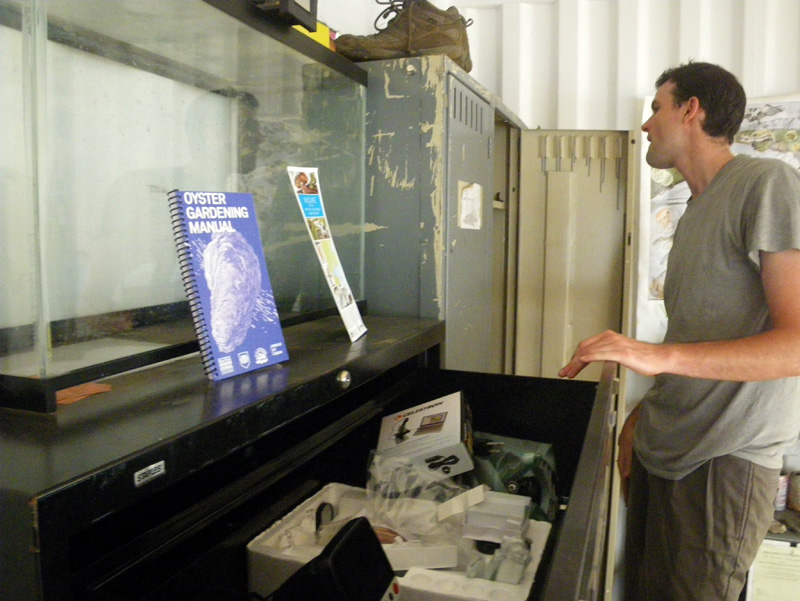
Our mission today was collecting samples for analysis by Dr. Michael Levandowsky, a research scientist and professor at Pace University who helps out with water quality testing.
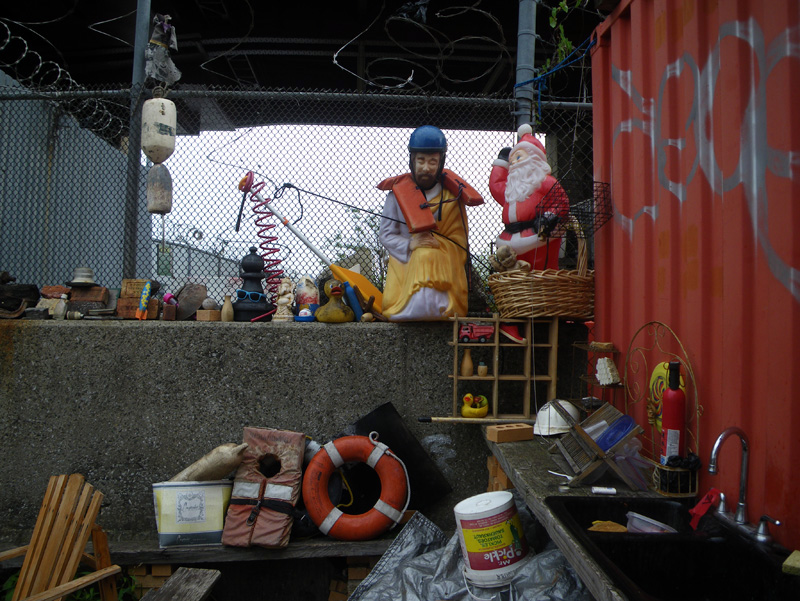
NBBC members, Patterson Beckwith and Amy Gartrell came along as well. Patterson showed us the NBBC’s amazing collection of floatable debris, all found in the Newtown Creek and East River.
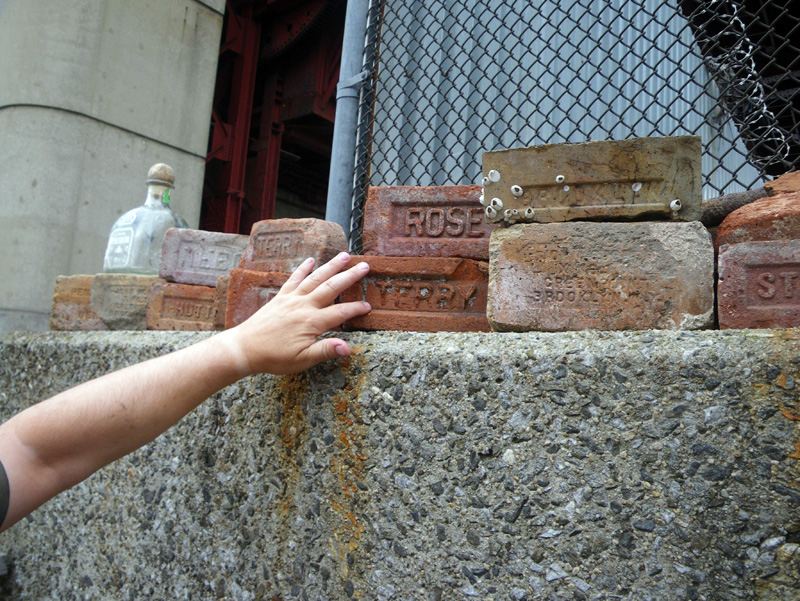
Patterson also collects bricks from the shores of New York City. “They used to cast their names on the side to help the bricks adhere to one another.” Said Patterson, “Now you can look them up online and read about the companies that made each brick.”
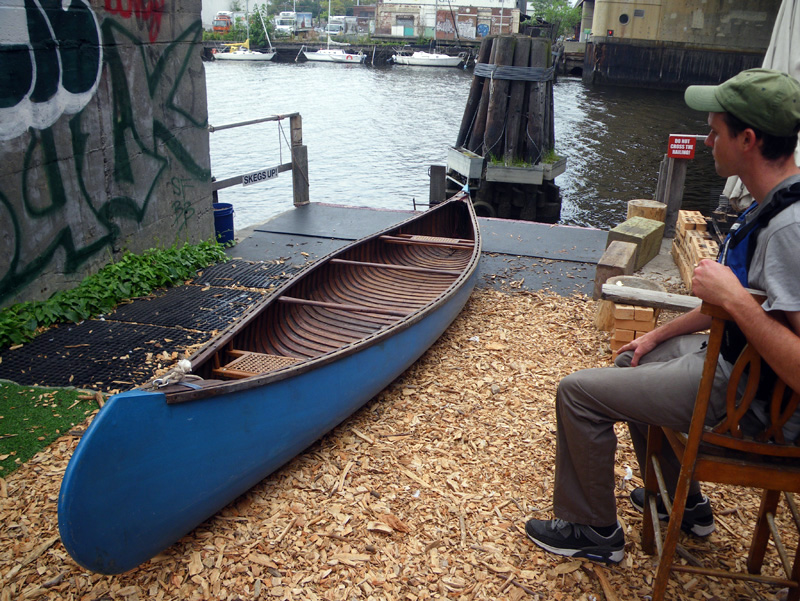
We chose to take out the Sherman canoe, a large canvas ‘Old Town’ from the 1930’s.
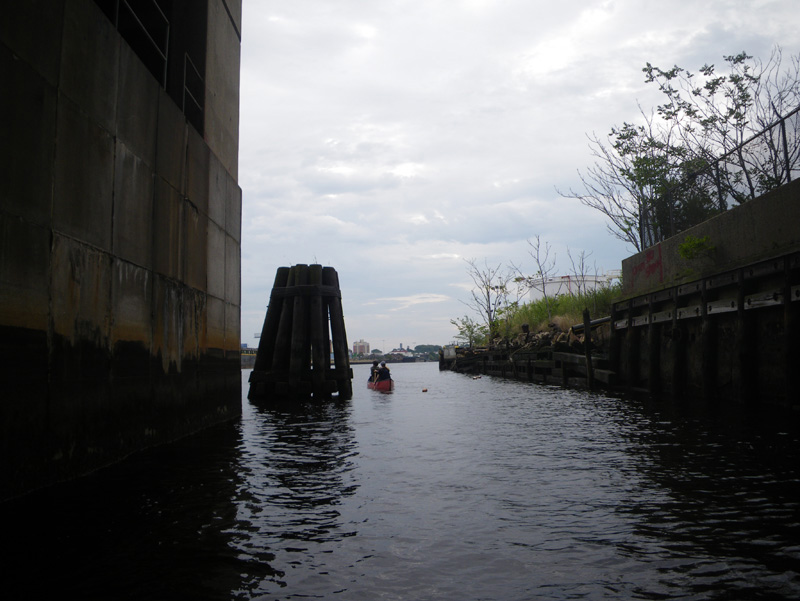
Compared to my boats, the Sherman seemed to glide effortlessly through the water,
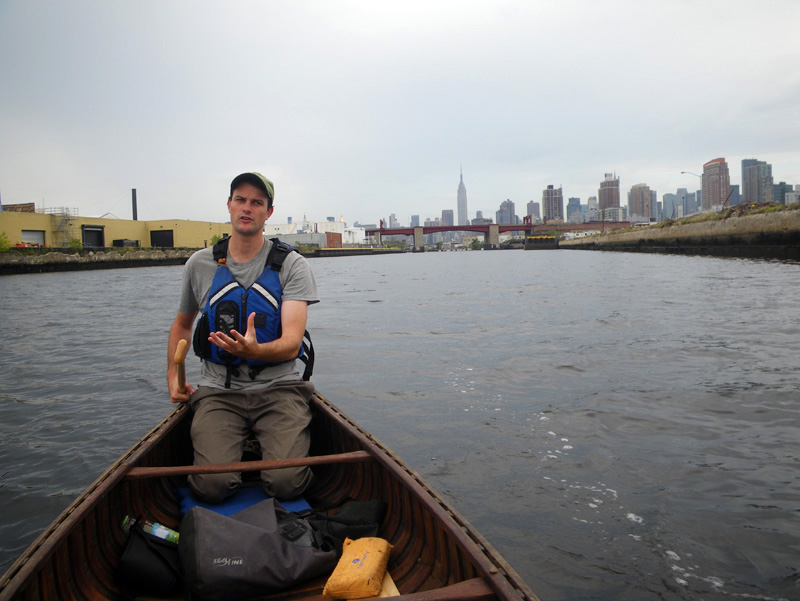
and Willis explained how her razor sharp bow and stern helped reduce drag. It’s something I will have to keep in mind for the next ‘Tide and Current Taxi’ design.
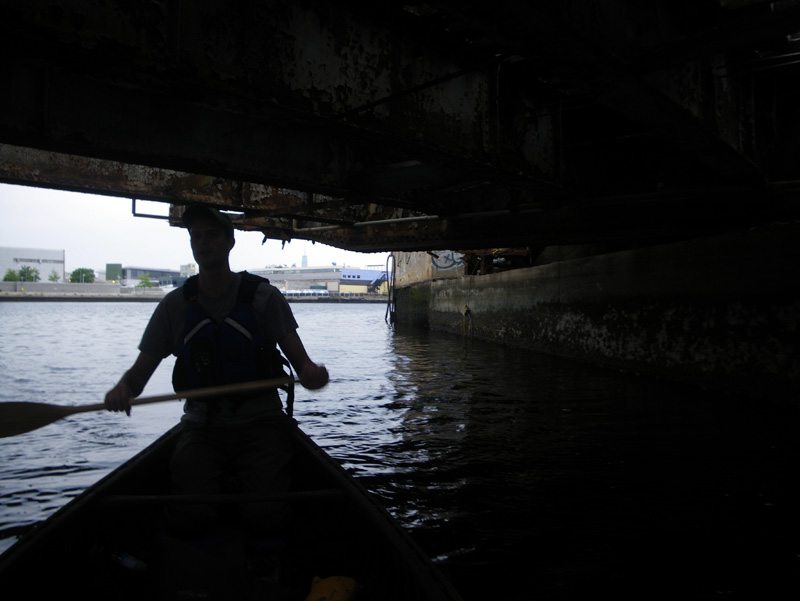
Our first stop was a Combined Sewer Overflow outfall in the Dutch Kills waterway. Willis planned our trip to coincide with low tide, a narrow window of opportunity to paddle into the CSO.
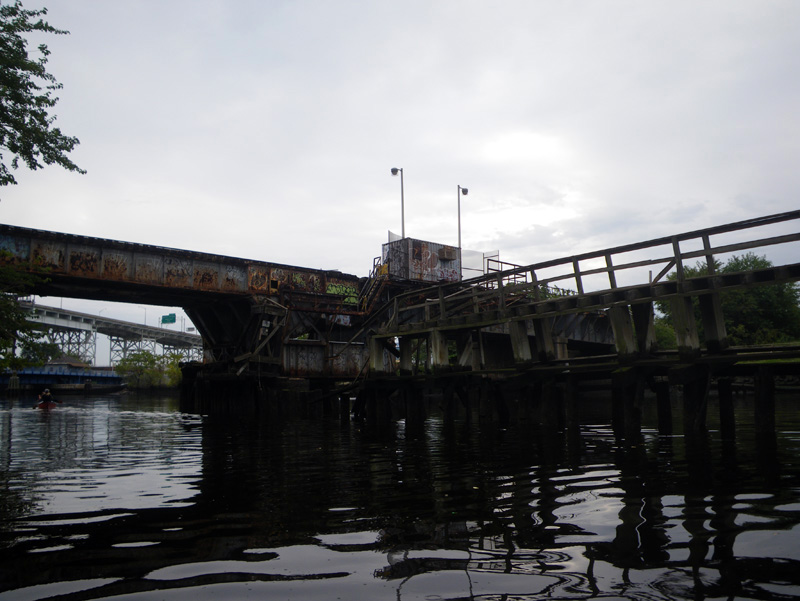
We chose an amazing day to look at the water itself. Heavy rains and warm weather had caused a bloom of red algae in the Newtown Creek.
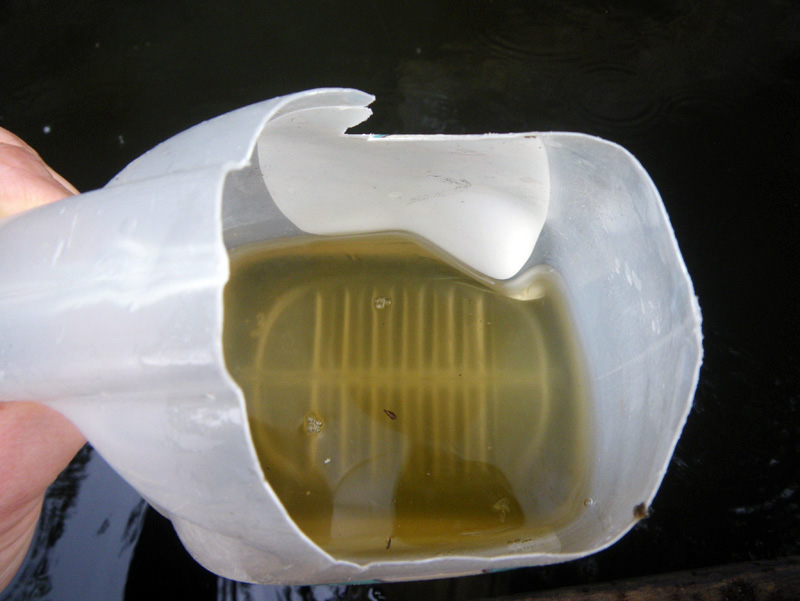
It was hard to get a good picture, but the microscopic dinoflagellates were present in such huge quantities, that their ochre color was perfectly visible.
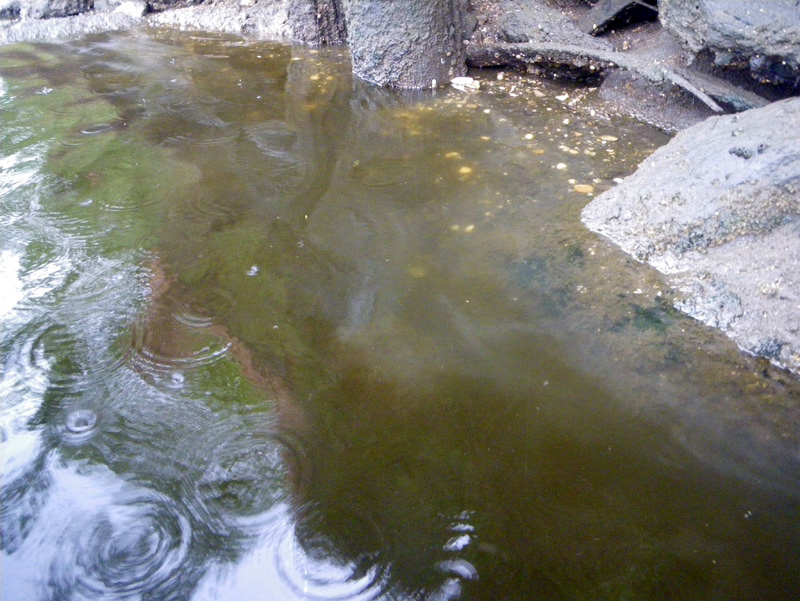
We could see eddies of color swirling along the banks. The water right next to the shore seemed clear, perhaps because of fresh rainwater leaching in from the street.
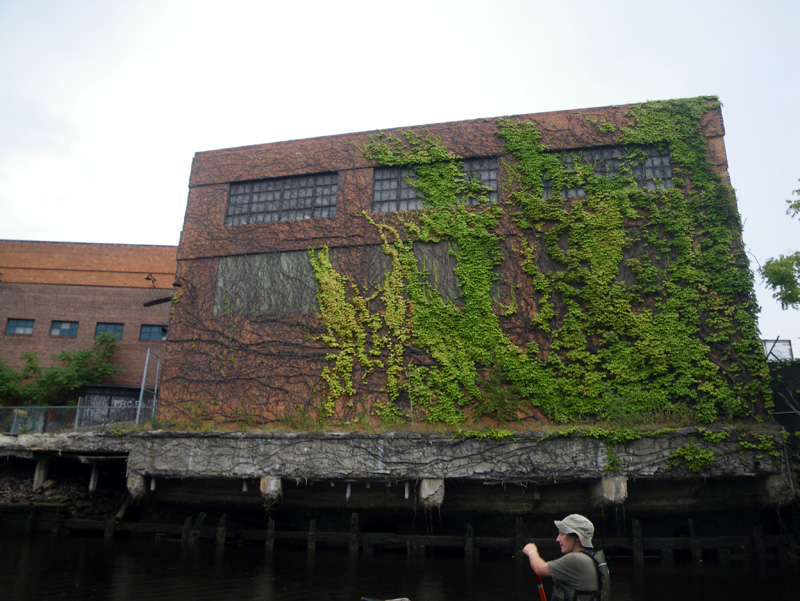
The CSOs, present an interesting problem for the health of the Newtown Creek.
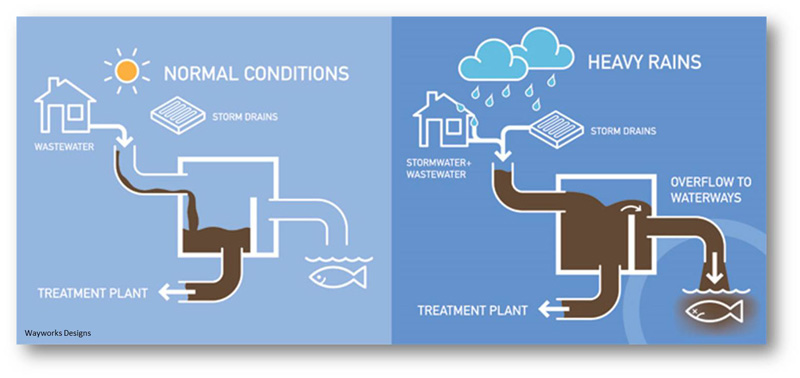
A Combined Sewer Overflow is exactly what it sounds like; places where raw sewage enters the waterway. They’re illegal under the Clean Water Act, but would require such a huge amount of infrastructural change, New York City finds it basically impossible to fix. The new superfund status of the Newtown Creek is not likely to help the situation either, Willis explained, because the fund doesn’t cover biological contaminants.
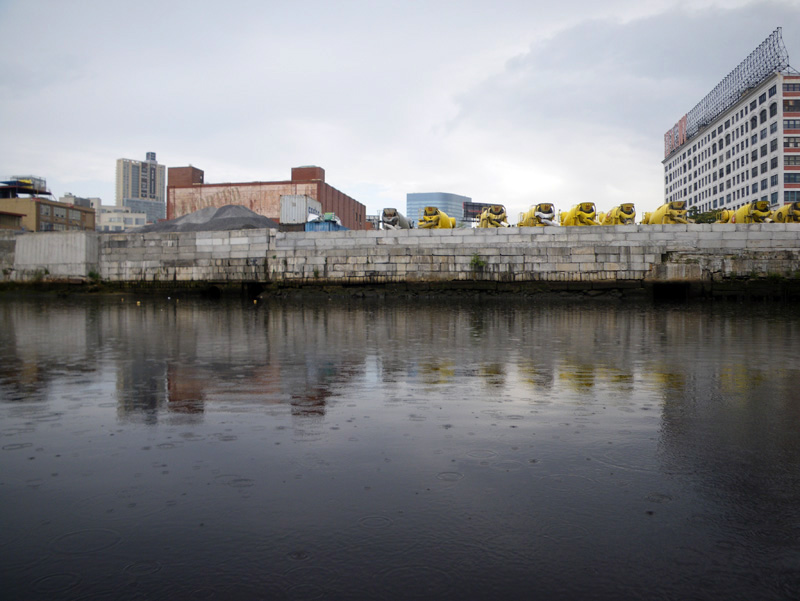
If someone can show that CSOs are actually contributing more than just biological contaminants in the creek, then maybe the city will take a closer look.
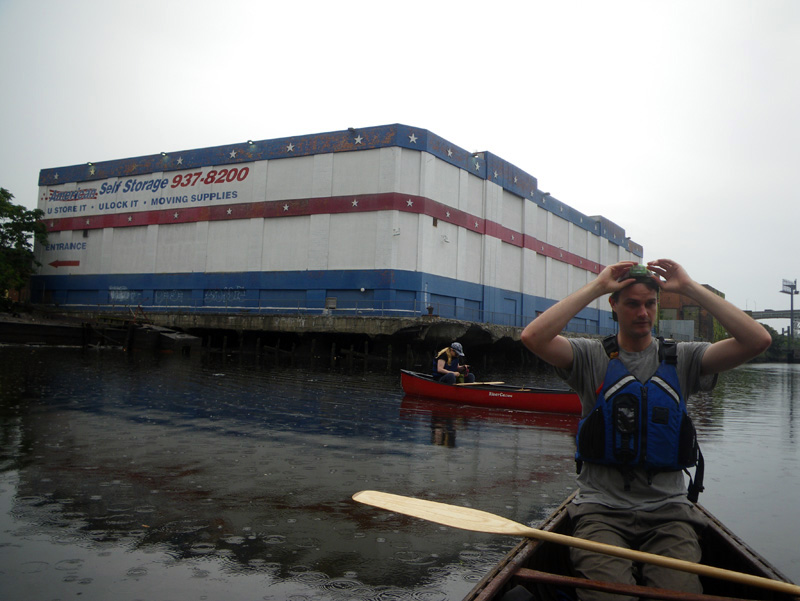
A light rain had started, and we remembered our tunnel exploring friend, Steve Duncan’s advice; “When it rains – NO DRAINS.”
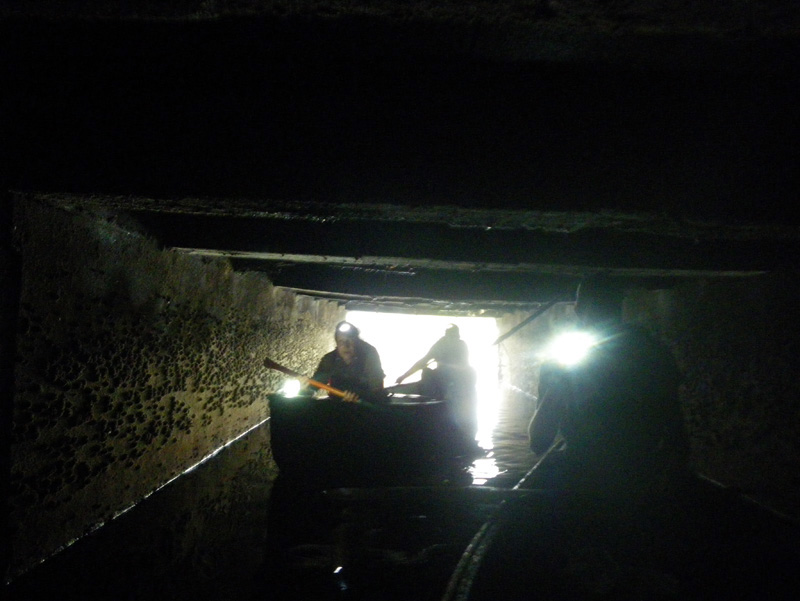
We figured a light rain couldn’t hurt, so we entered the CSO.
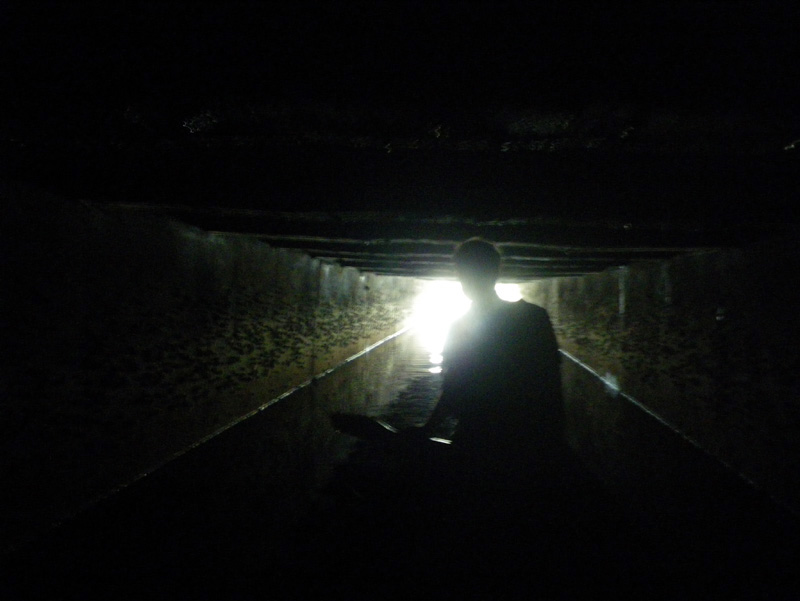
It had seemed like a good idea in daylight, but as darkness closed in around us, my imagination went crazy.
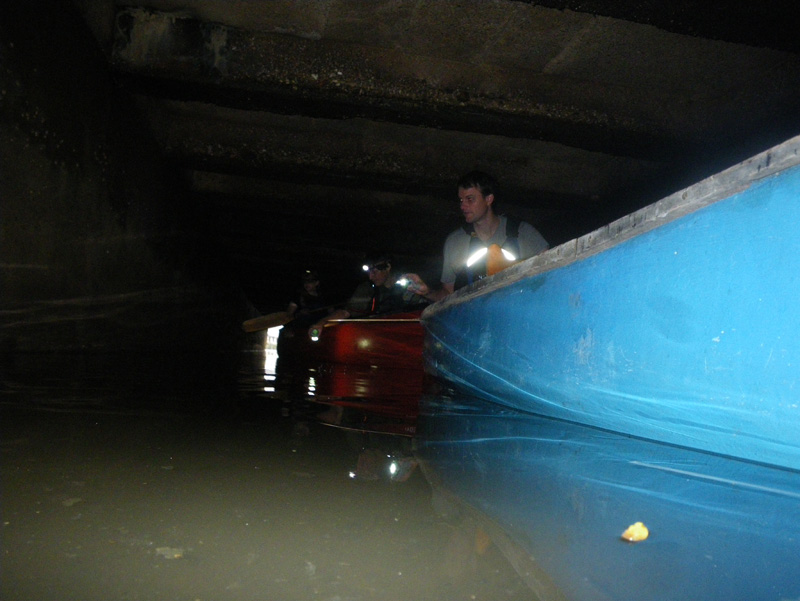
Every drip sounded like a waterfall of sewage, and the current seemed to pull us further into the darkness.
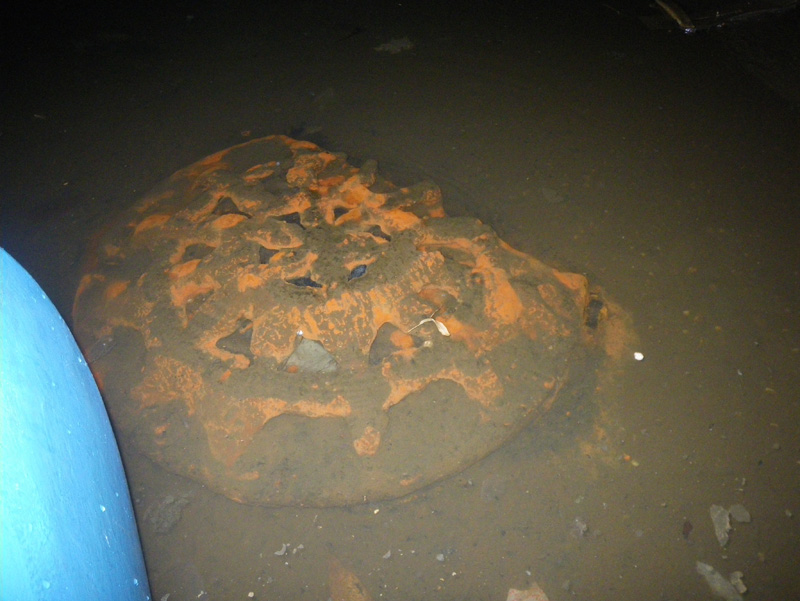
I took pictures with my flash just to see what we were bumping over.
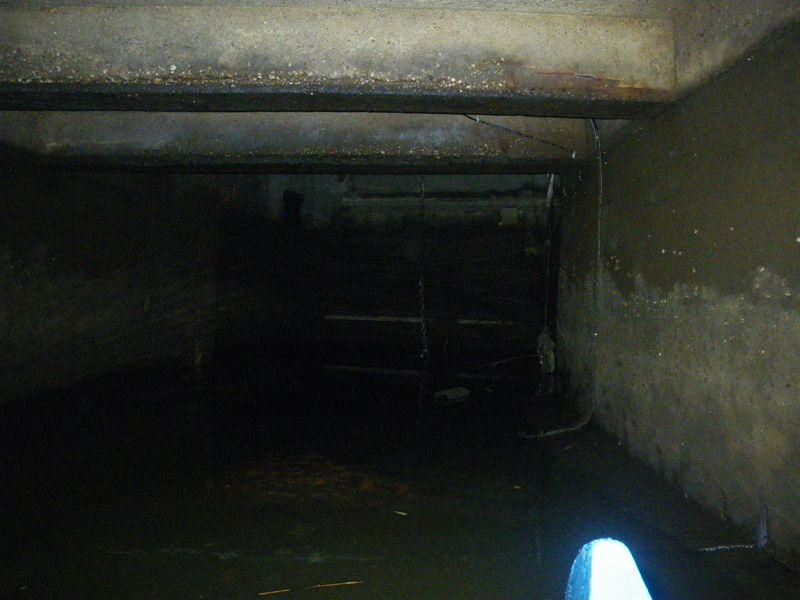
At the end of the tunnel, we found ourselves in front of a huge wooden gate; this was the overflow valve itself.  When the water levels rise during a rain event, this thing floats opens and lets the city sewage right into the Newtown Creek.
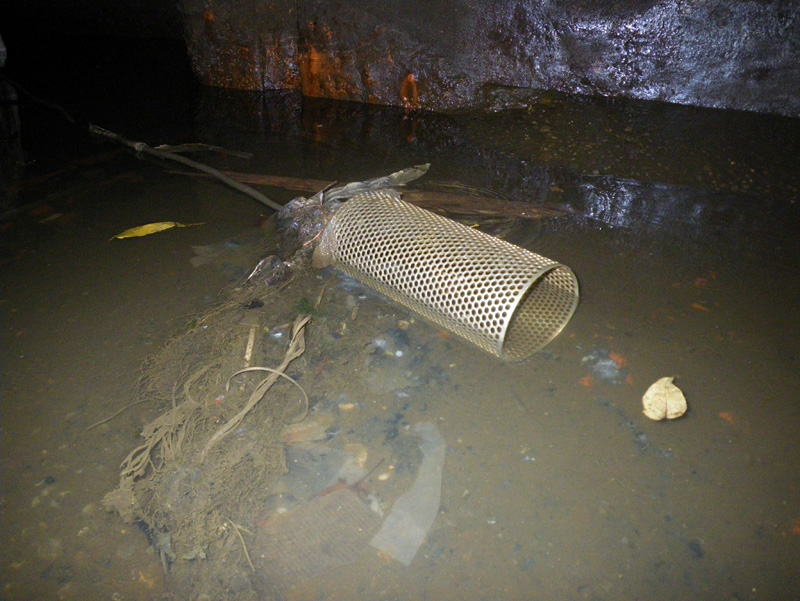
There seemed to be some kind of monitoring equipment installed near the valve. Willis thought this might be an effort by the city to get better data on exactly when the CSO gates open and how much untreated water is coming out.
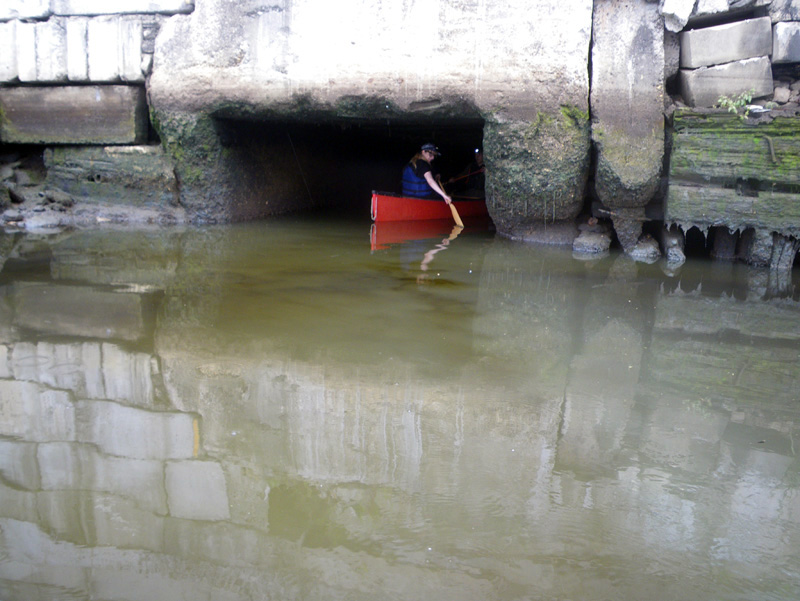
As we came out of the CSO, we noticed the red algae pooling around the entrance of the tunnel.
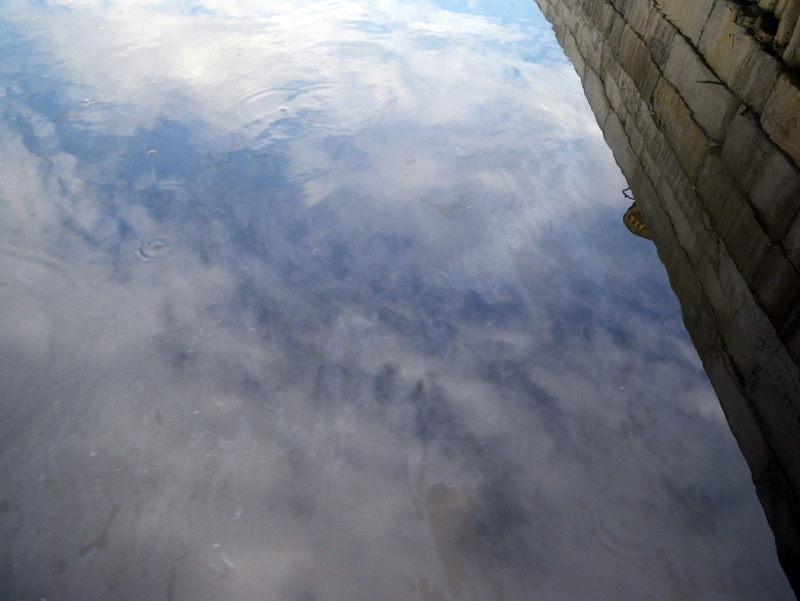
The dispersion of algae might be a sign of fluctuating oxygen levels in the water. Sometimes algae can consume so much oxygen, it kills everything else in the water.
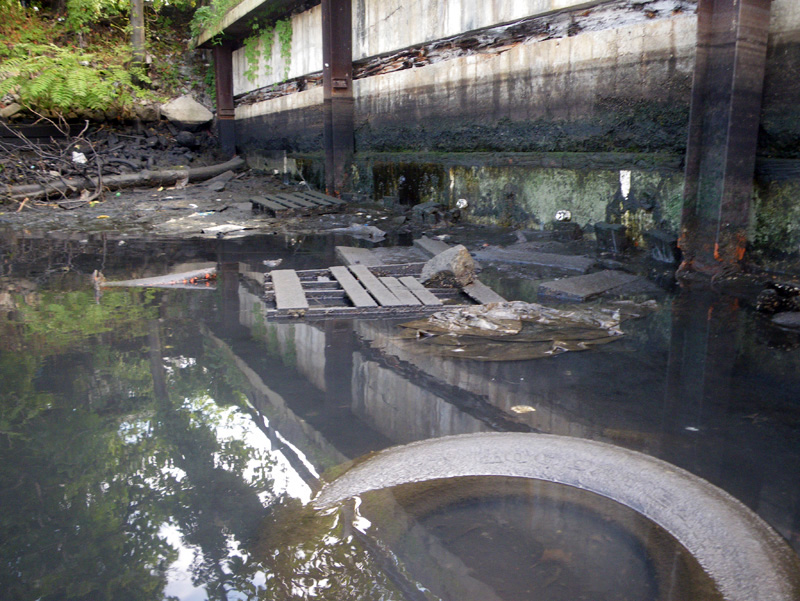
It was hard to imagine anything living in here except bacteria and microscopic things,
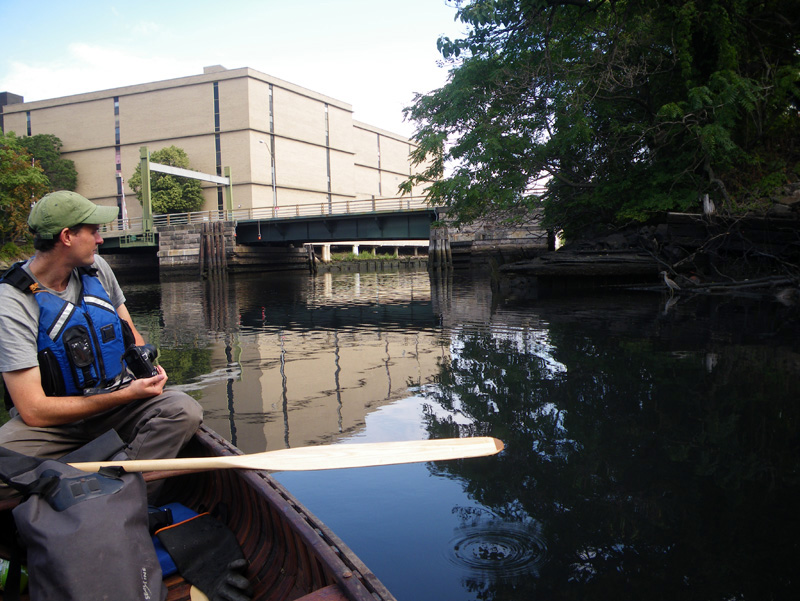
but we stopped to watch a young heron fishing along the bank. He let us float so close that we could see his distinctive yellow bill and red-rimmed eyes.
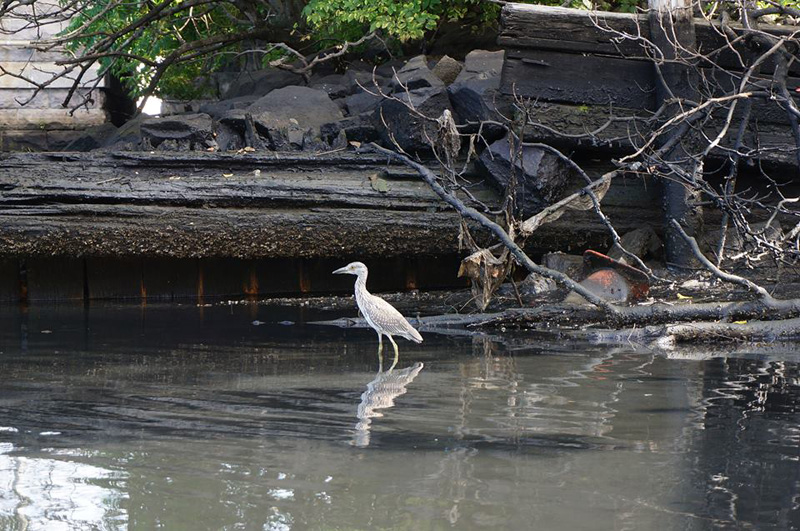
Here is Willis’ picture of the bird, a black crowned night heron.
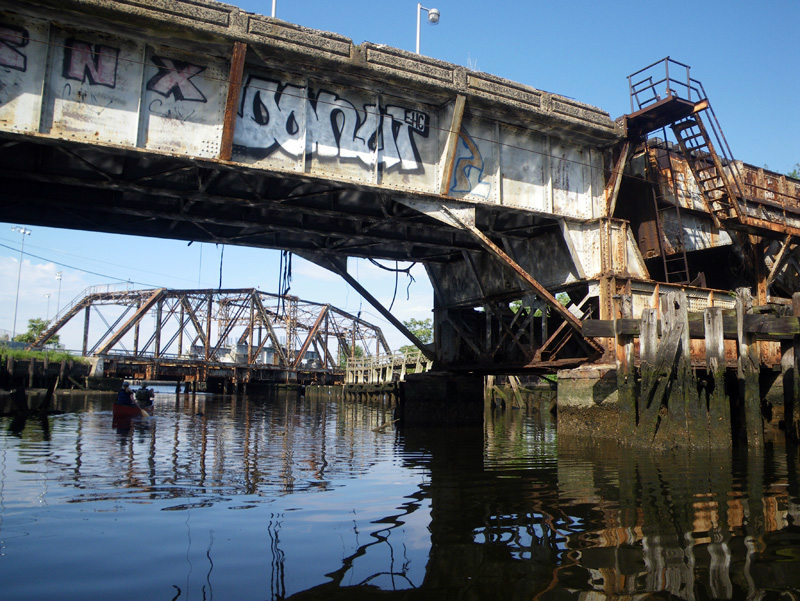
Hearing Willis describe the problems surrounding CSOs, the superfund site, and all the competing interests, made my head swim.
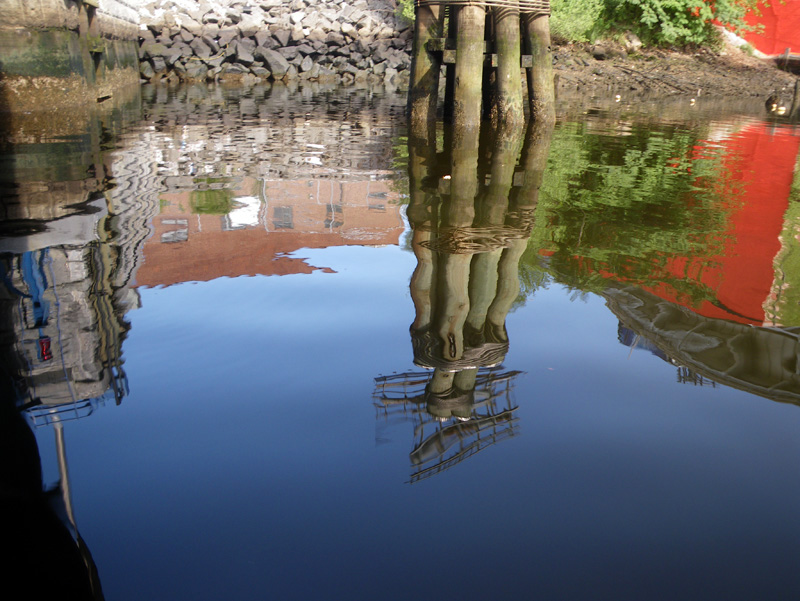
Who is to blame for the wreck of the Newtown Creek? Who is going to fix it?
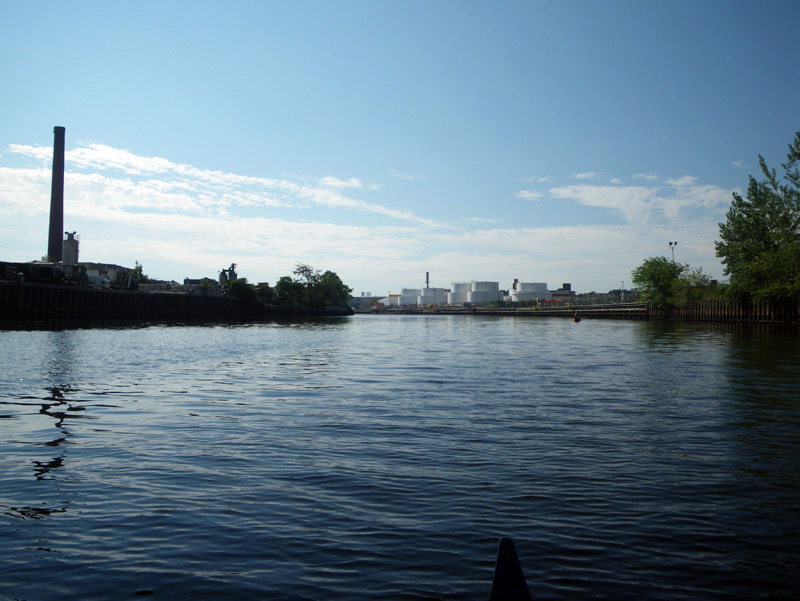
It seems simple though, when I think of the example that Willis and his colleagues are setting.
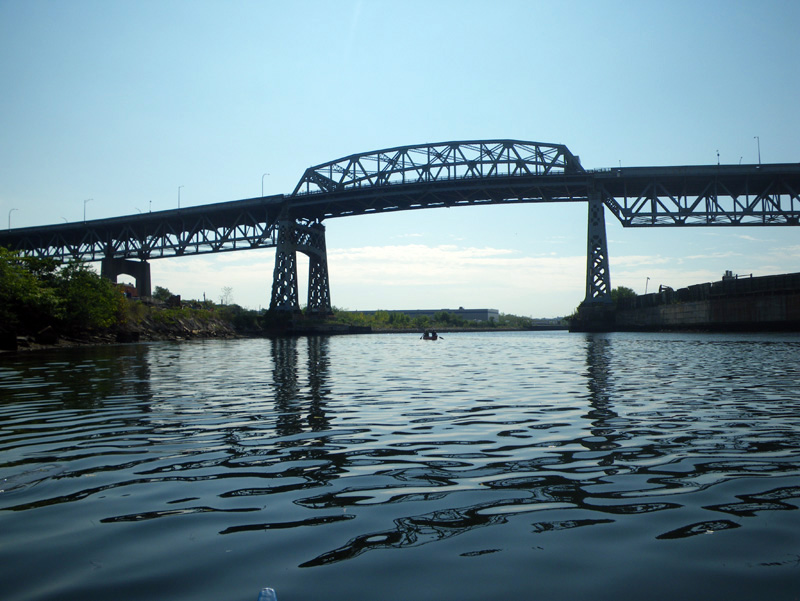
It’s fun to think of the Newtown Creek as my own personal backyard. The harder thing to accept is that the CSO also belongs to me. It’s my toilet, my sewer, my energy needs, and my responsibility to help fix.
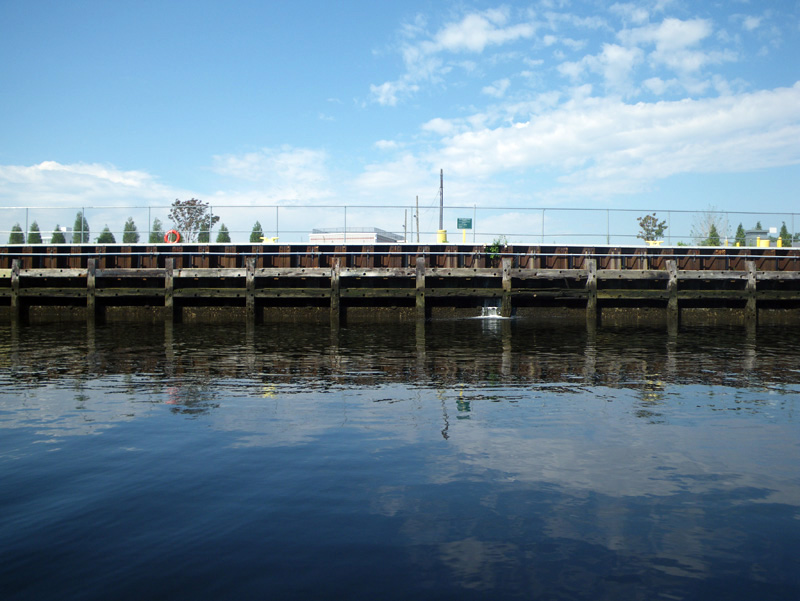
Willis pointed out one of the ExxonMobile remediation sites. This spout of clear water is the outfall of a recovery well pumping system. ExxonMobile operates these in an effort to clean one of the largest oil spills in recorded history.
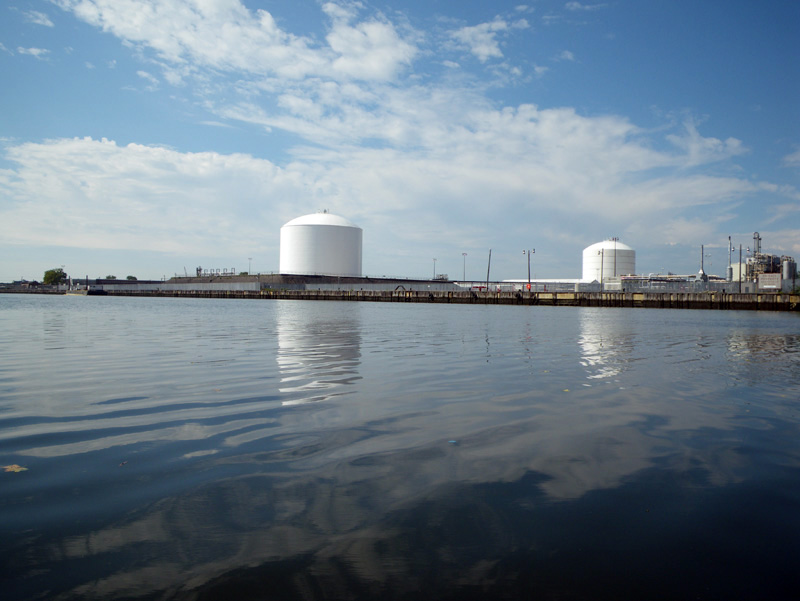
It was great hear the facts about every spout and spill and drain from Willis and Patterson. Things that I had speculated about for years were becoming clear.
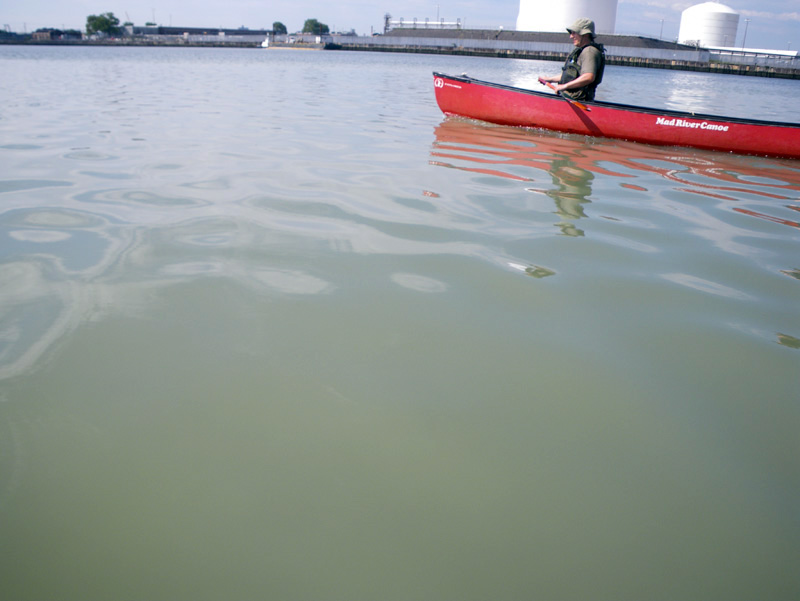
As we paddled into Maspeth, a mile up the creek, the water had completely changed color.
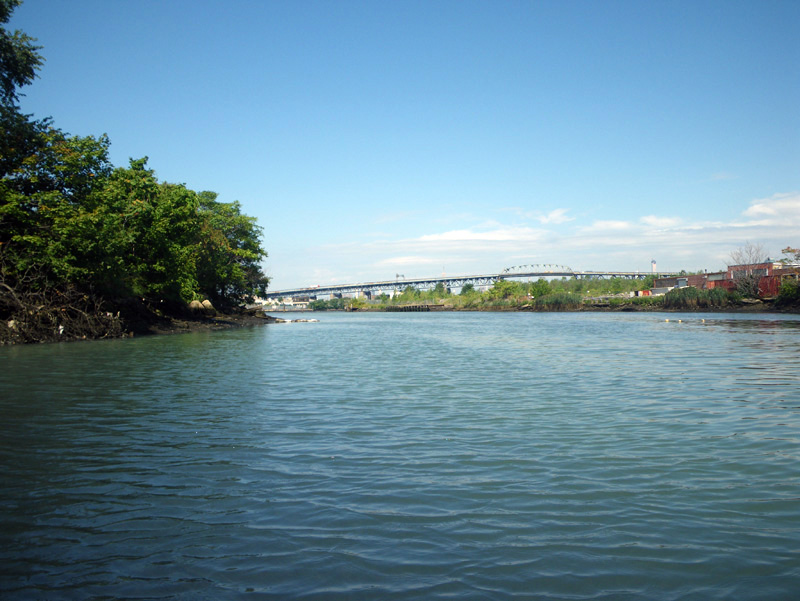
In a certain light, the creek was glowing like a caribbean lagoon,
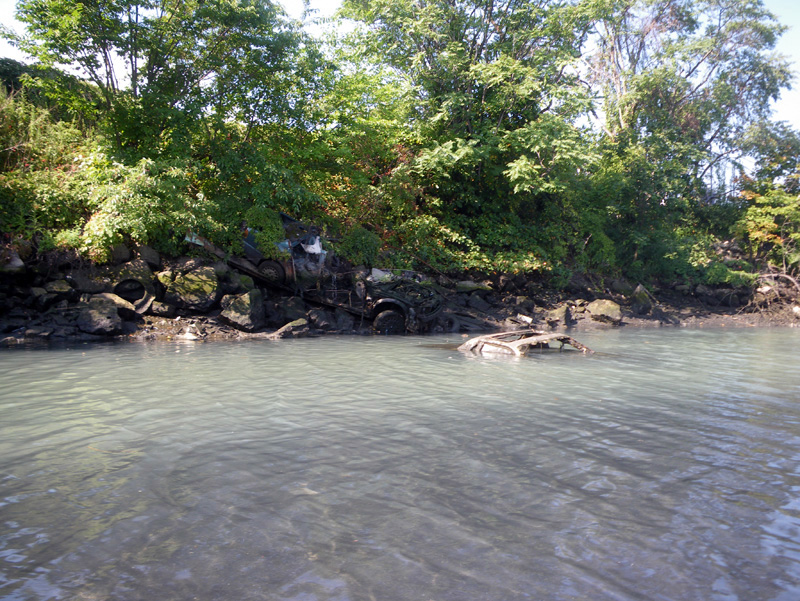
but instead of white sand and coral reefs, there were wrecked cars,
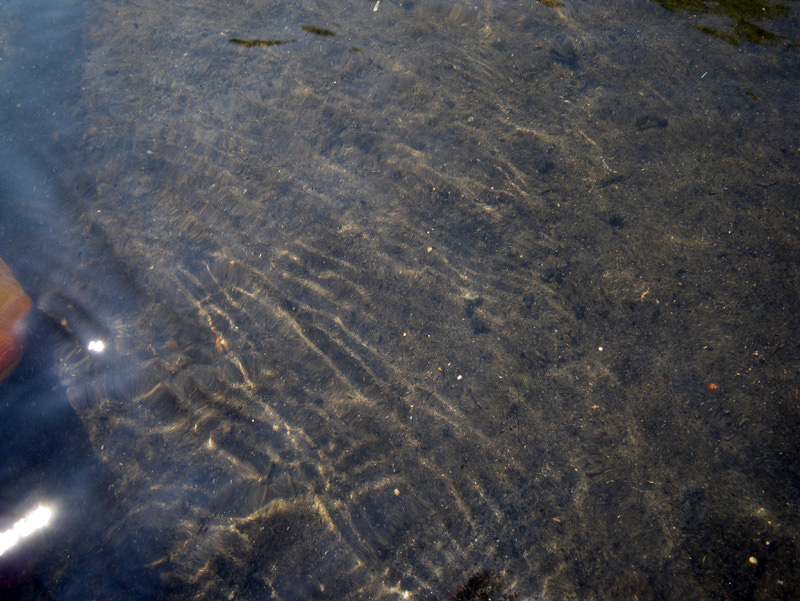
and the creek bottom was perfectly black.
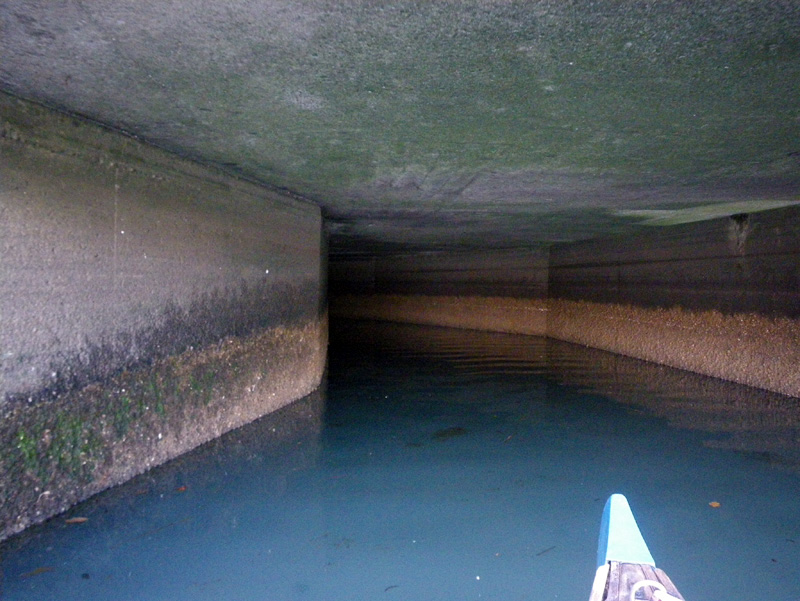
We entered another CSO, a huge double tunnel that Willis said was not even the biggest in the creek.
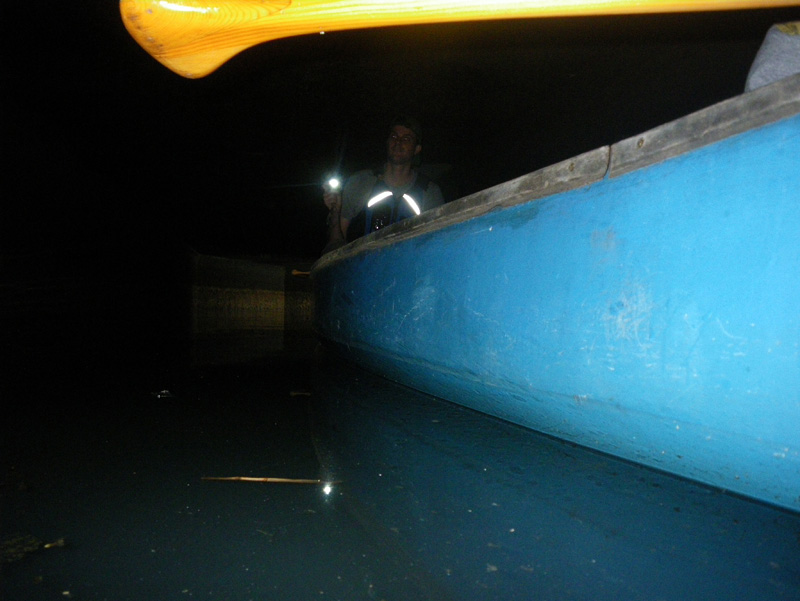
I could hear the sound of rushing water and I imagined being sucked over a giant waterfall in the dark,
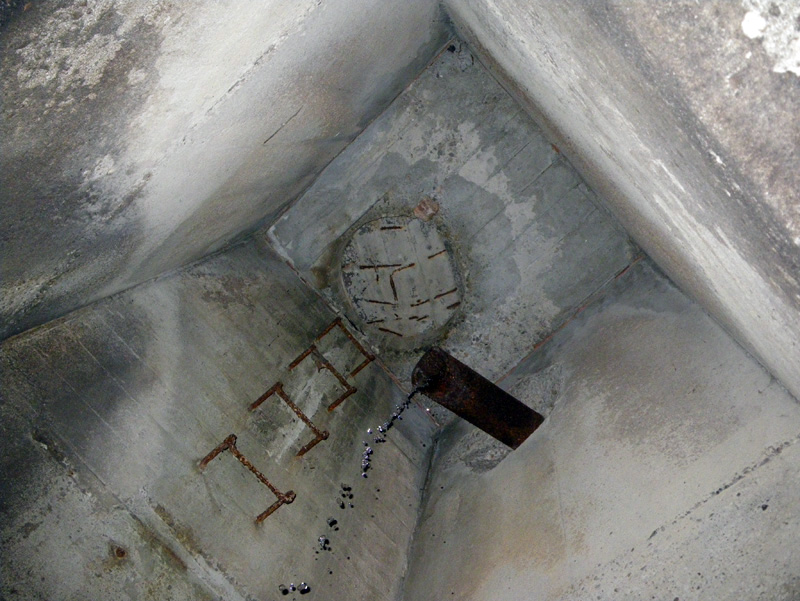
but it was just a trickel.
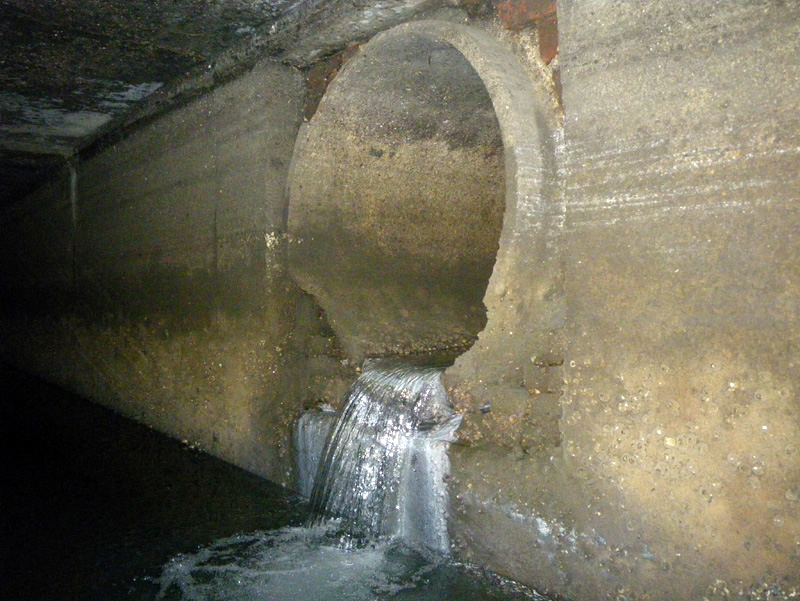
Willis said this one could be a freshwater stream, rerouted underground to join the creek,
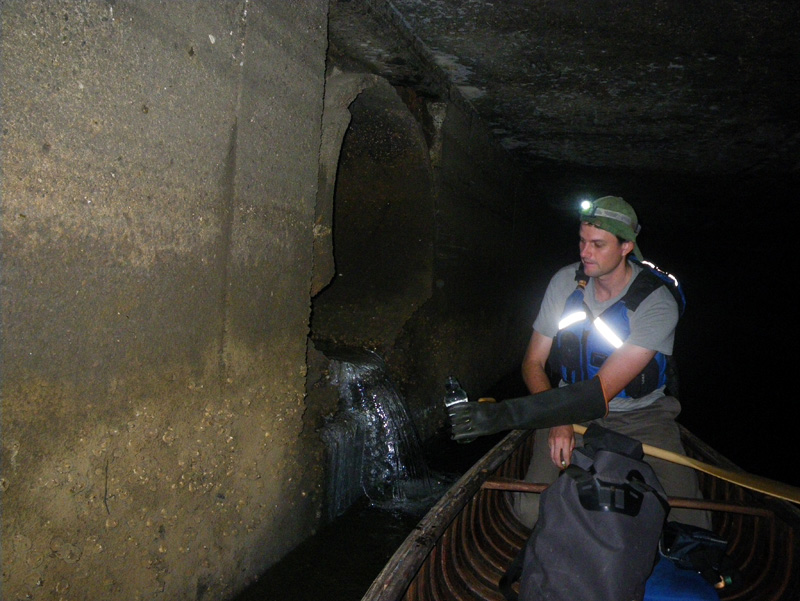
and he took a sample for Dr. Levandowsky.
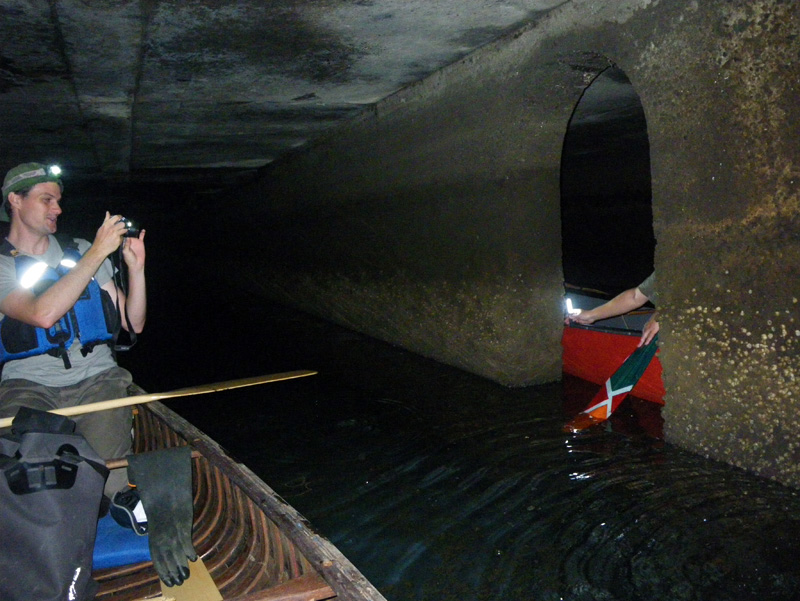
Patterson and Amy had taken the other tunnel, and we checked in with each other at each opening to compare notes.
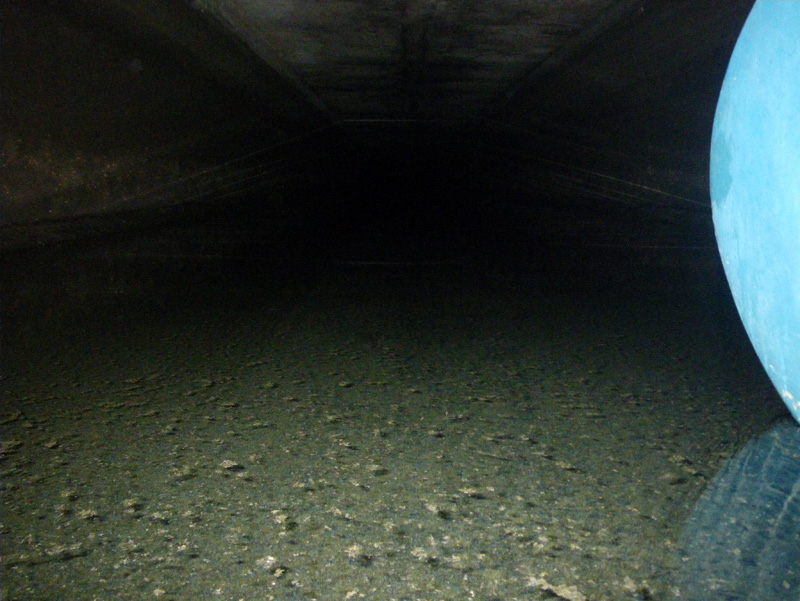
I saw an eel under the boat, something that I had never seen before in the Newtown Creek, but he swam away before I could get a picture.
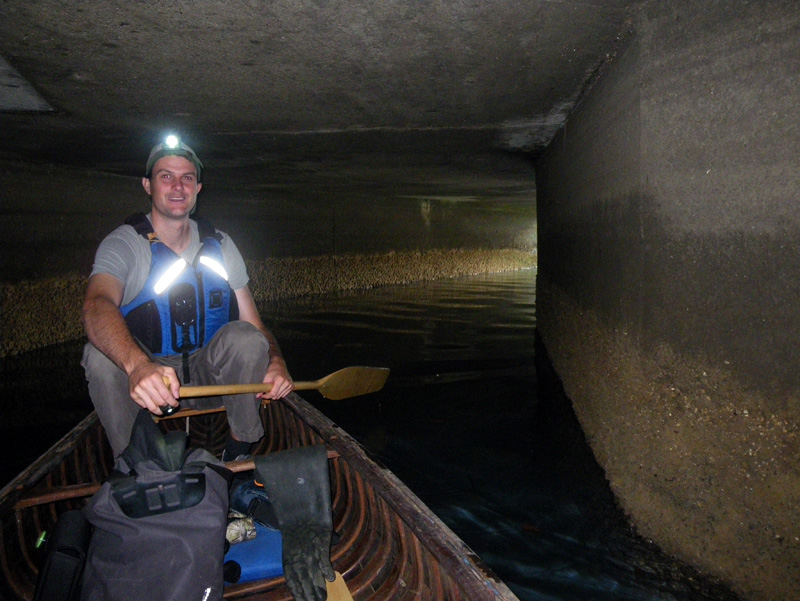
We backed out of the tunnel, when it got too shallow to float.
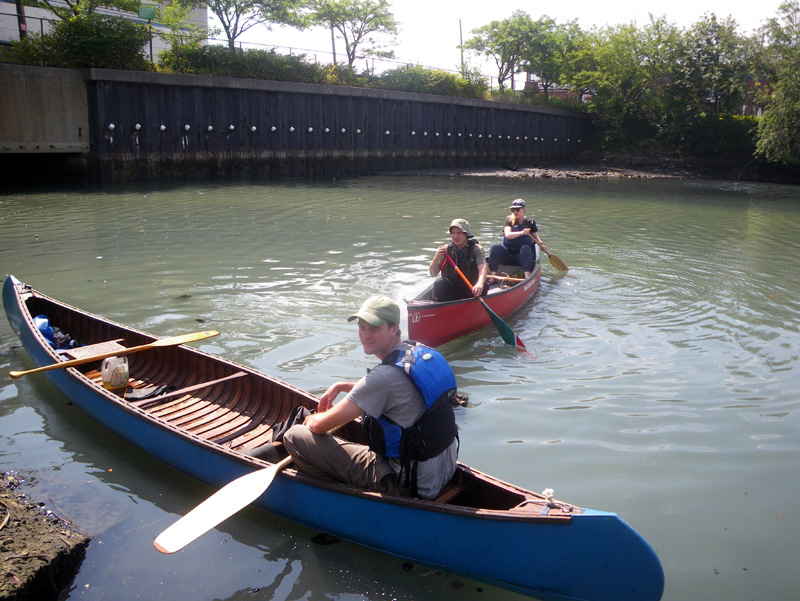
We had one more stop to make.
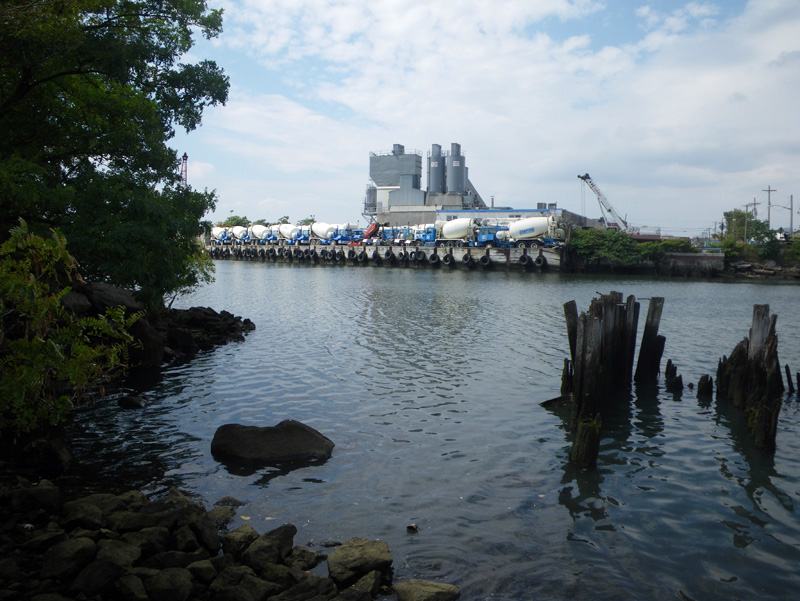
The Maspeth Plank Road used to be a muddy and garbage filled dead end, but theThe Newtown Creek Alliance has been clearing and restoring the site to make a pretty little public park.
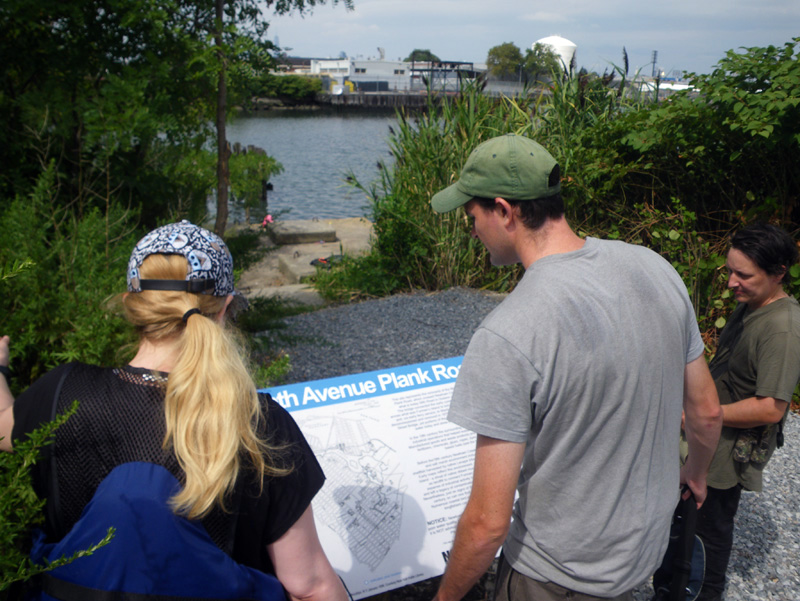
They had just installed a sign (designed by Willis), and needed a picture for their funders.
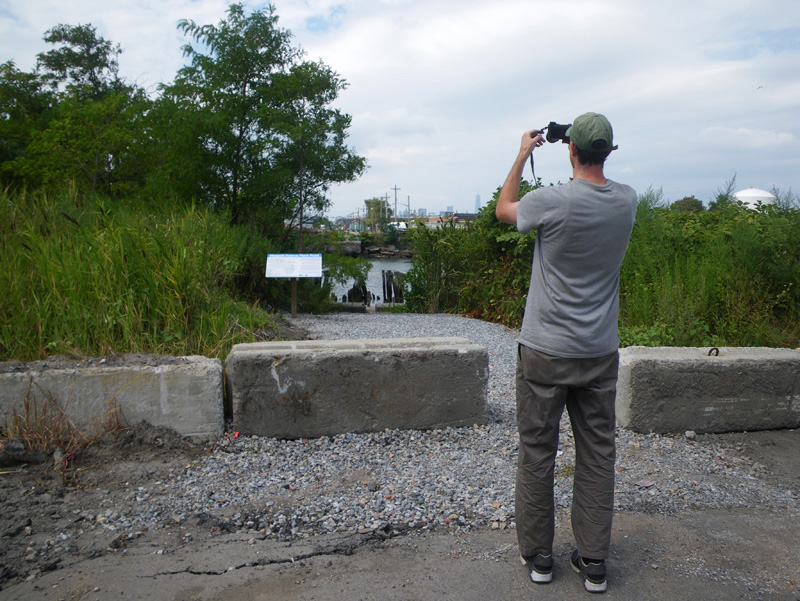
Part of the problem, other than neglect, was that the road-end was washed out from two clogged street grates, overflowing with water from a mysterious source.
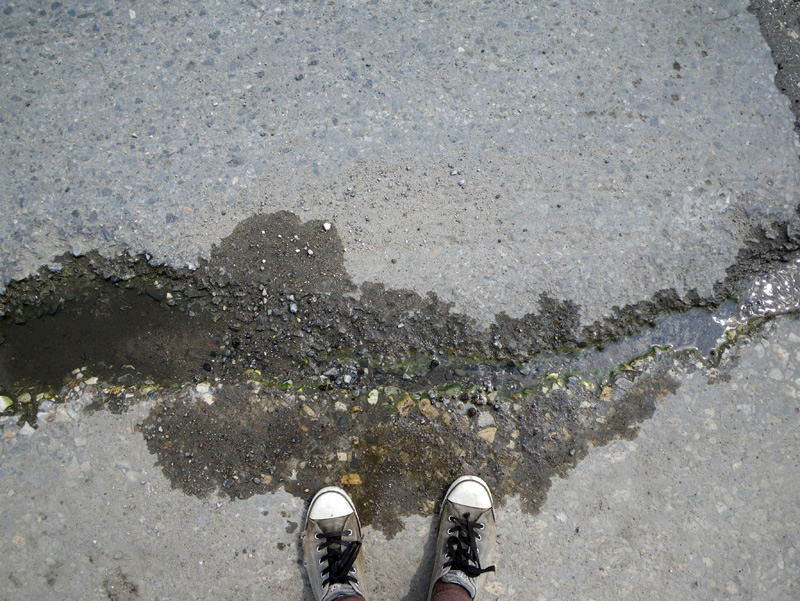
A few blocks away, I saw the place in the street where water continually emerges. Willis said there might be a natural spring buried under there, or it might be a broken water main.
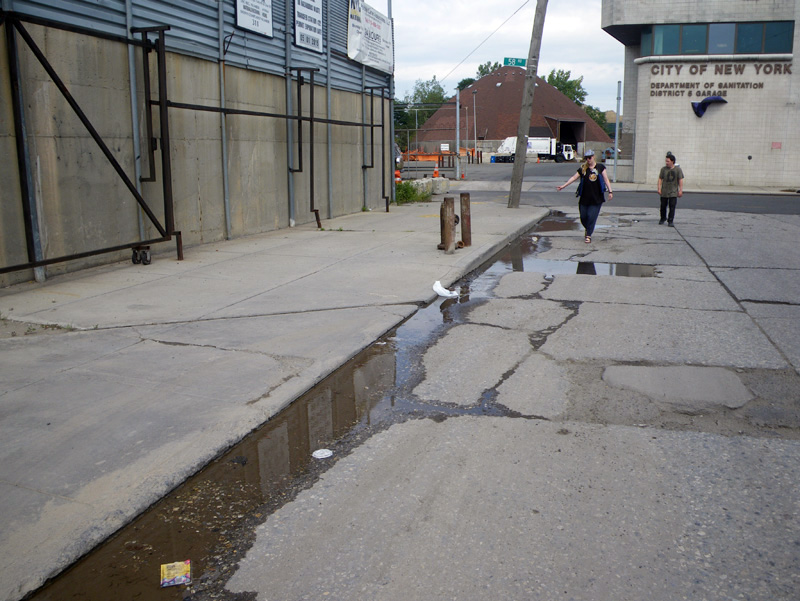
When he asked the DEP to come out and have a look, the crew made fun of him for asking so much about the spring. They wanted to know how old he was, and what he did for his real job. What did he care about a leaky pipe?
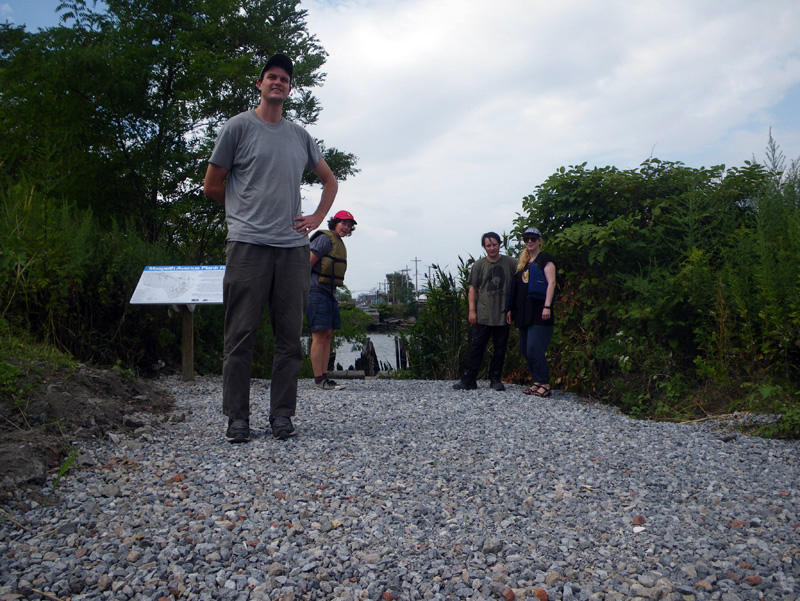
“This IS my job,” said Willis.
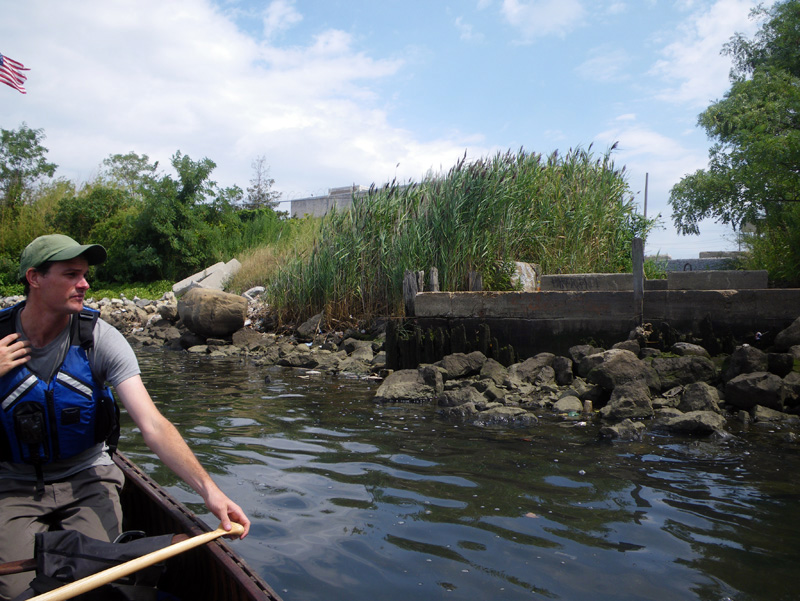
The thing that I think is so effective about Willis’ approach to the landscape, is that he seems to enjoy the whole process of restoration, not just end result.
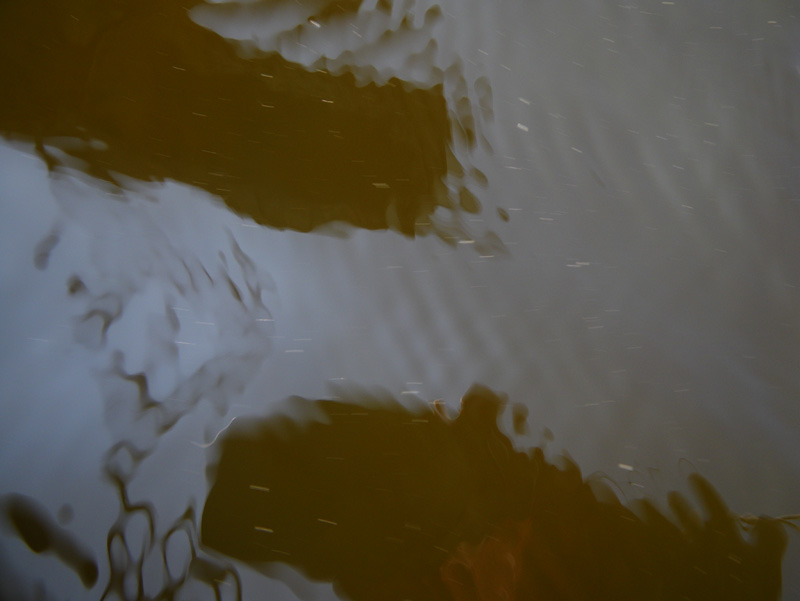
He likes collecting dinoflagellates,
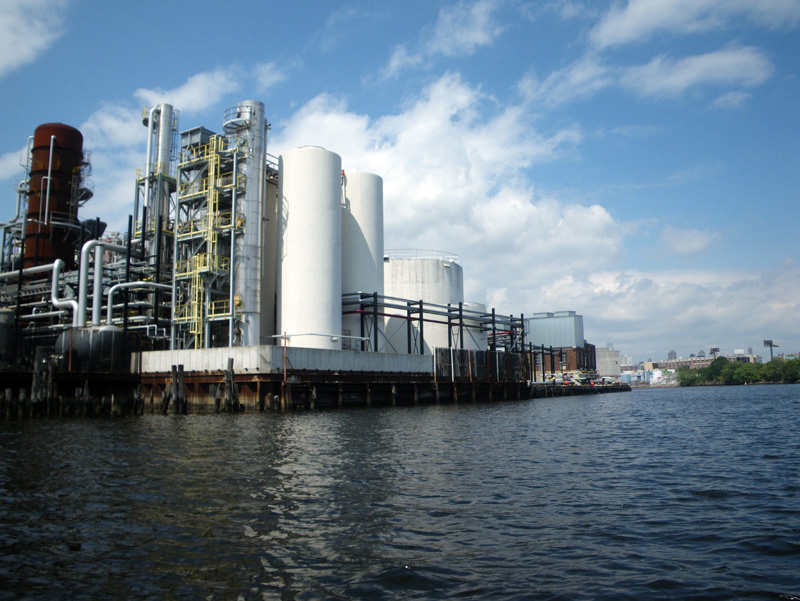
and touring the backyards of energy facilities,
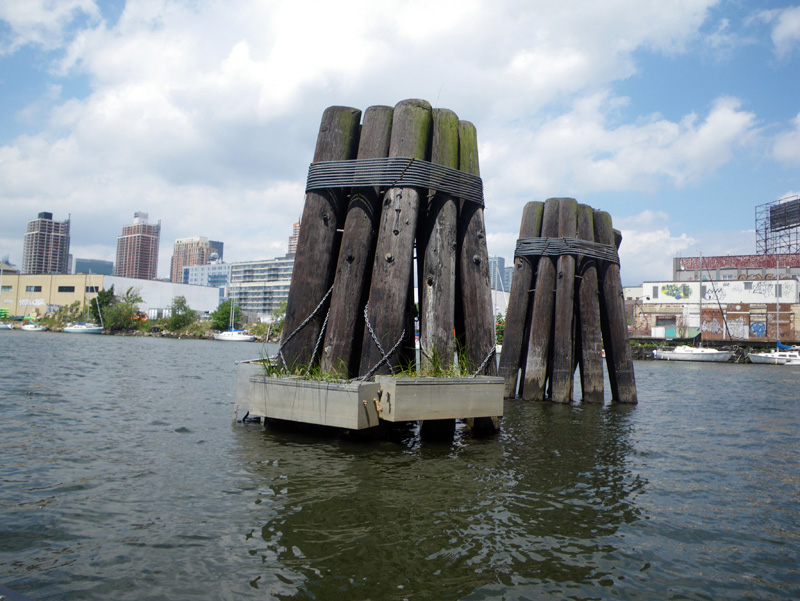
just as much as he likes seeing the results of the NCA and NBBC’s hard work (like these planter boxes, filled with native wetland grasses and installed at the level where the grass would live if the Newtown Creek had never been developed).
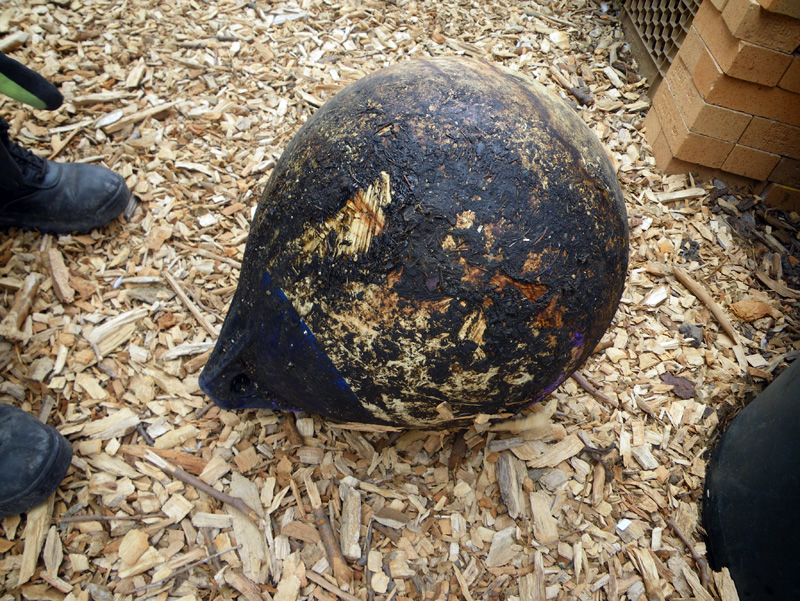
Back at the boathouse, Patterson examined his latest floatable find,
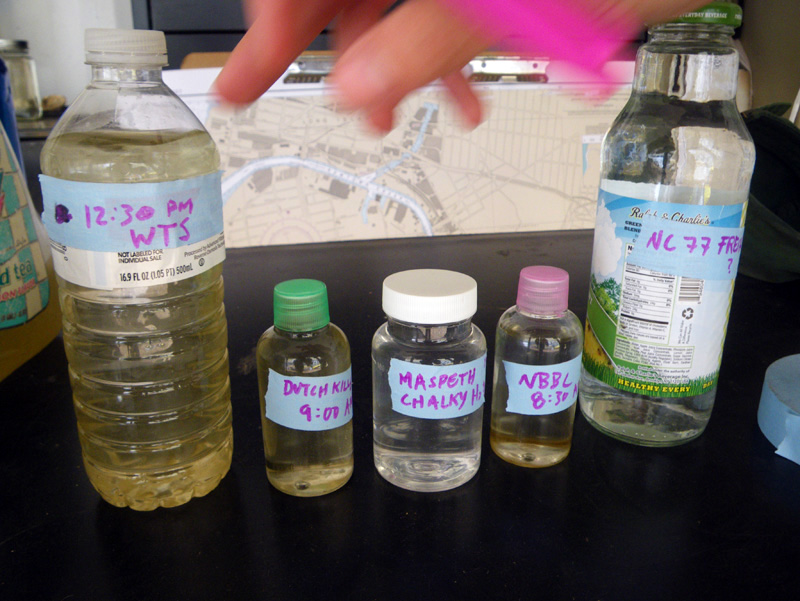
and Willis labeled his samples, setting them aside for Michael Levandowsky.
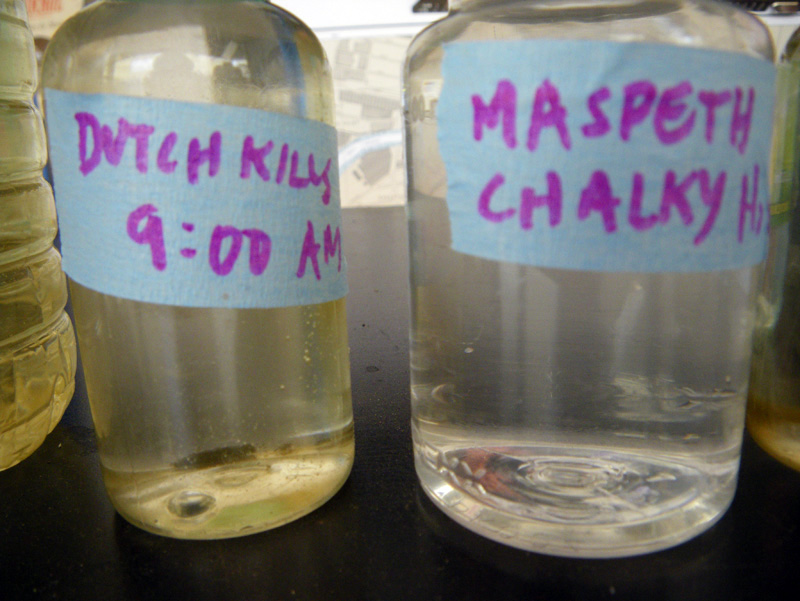
I figured Michael would respond with a list of numbers, but his email the next day read like the screenplay for ‘Gremlins’…

Thank you Willis, Patterson, and Amy for an amazing day on the Newtown Creek!
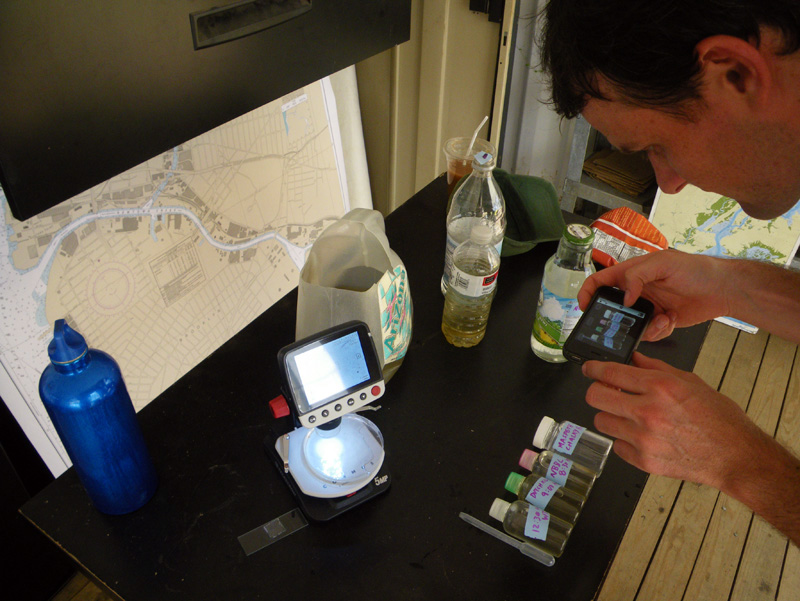
↑ Return to Top of Page ↑